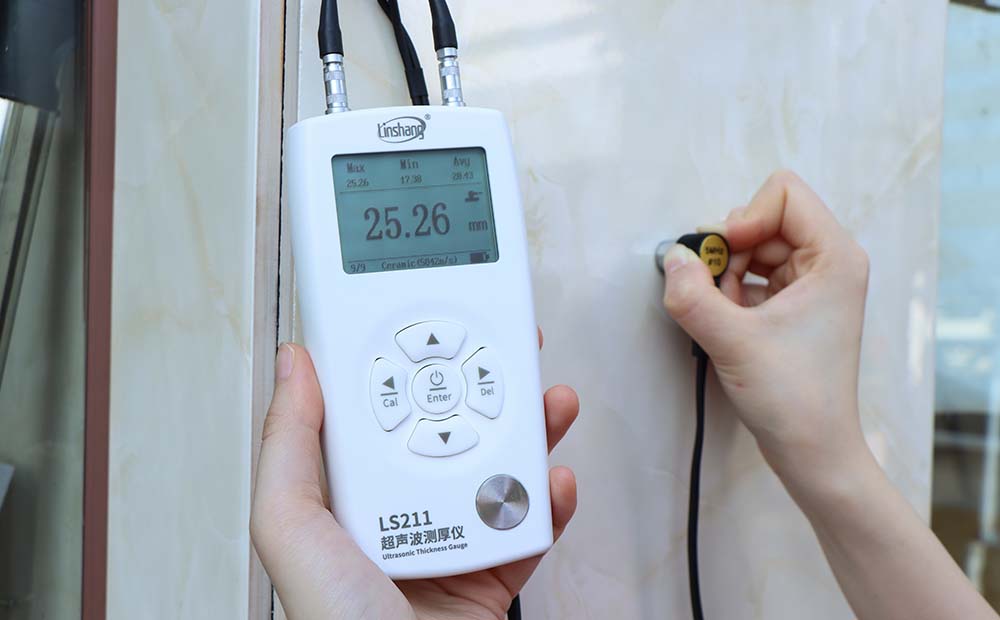Pipe Thickness Gauge vs. Calipers: Which Tool Is Right for You?

When it comes to measuring the thickness of pipes in industrial settings, precision is everything. Whether you’re working in oil and gas, construction, water treatment, or HVAC, knowing the exact wall thickness of your pipes can help ensure structural integrity, system efficiency, and safety compliance. Two commonly used tools for this purpose are the pipe thickness gauge and the caliper. But which one is right for your application?
In this blog, we’ll explore the differences between these tools, their advantages and limitations, and how to choose the best option for your specific needs. By the end, you’ll understand why a pipe thickness gauge may be the more reliable choice in many industrial scenarios.
Understanding the Basics
What Is a Pipe Thickness Gauge?
A pipe thickness gauge is a non-destructive testing (NDT) instrument designed to measure the wall thickness of a pipe, typically using ultrasonic technology. The device works by emitting a sound wave into the pipe wall and measuring the time it takes for the echo to return. This information is then used to calculate the wall thickness precisely.
Applications:
- Corrosion monitoring
- Inspection of painted or coated pipes
- In-service condition assessment
- Predictive maintenance
What Is a Caliper?
A caliper is a mechanical or digital measuring tool that can determine the external or internal dimensions of an object. In the context of pipes, calipers are often used to measure the external diameter and, in some cases, wall thickness—by measuring both outer and inner diameters and subtracting the two.
Types of Calipers:
- Vernier calipers
- Dial calipers
- Digital calipers
Applications:
- Quick dimensional checks
- Low-cost measurements
- Measuring soft or malleable materials (with care)
Key Differences Between a Pipe Thickness Gauge and Calipers
| Feature | Pipe Thickness Gauge | Caliper |
|---|---|---|
| Measurement Type | Wall thickness (non-destructive) | External/internal dimensions |
| Surface Preparation | Minimal; can measure through coatings | Requires clean, accessible surfaces |
| Accuracy | High (especially for internal erosion) | Moderate, depends on operator skill |
| Material Compatibility | Metals, plastics, composites | Metals and softer materials |
| Use in Service | Yes, while pipe is in operation | No, requires access to both sides |
| Tool Cost | Higher initial investment | Lower cost, basic models are cheap |
When to Use a Pipe Thickness Gauge
1. Non-Destructive Testing (NDT)
A major advantage of a pipe thickness gauge is its ability to measure thickness without cutting or altering the pipe. This is essential for in-service systems where disassembly is not an option.
2. Coated or Painted Surfaces
Many industrial pipes are coated with anti-corrosion materials or paint. Ultrasonic gauges can often measure through these coatings without needing to strip the surface.
3. Corrosion Monitoring
Pipe thickness gauges are invaluable in identifying corrosion and internal wear—factors calipers cannot detect without cutting into the pipe.
4. Documentation and Compliance
Most modern thickness gauges come with data logging features that make it easier to track measurements over time and maintain inspection records for compliance.
5. Difficult or Inaccessible Areas
Using a probe, a pipe thickness gauge can take measurements in tight or awkward spaces where calipers may not fit.
When Calipers Might Be Suitable
1. Basic External Measurements
Calipers are ideal for simple, external diameter checks, especially on pipes that are not yet installed or are easy to access from both sides.
2. Low-Cost Projects or Quick Checks
In applications where extreme precision is not essential, and budget is a concern, calipers offer a quick and cost-effective solution.
3. Non-Critical Environments
If the pipe will not be exposed to high pressure, corrosive materials, or safety-critical use, calipers may be sufficient for routine measurements.
However, it’s important to note that calipers require access to both the inner and outer surfaces to measure wall thickness, which may not be practical—or even possible—in many industrial settings.
Limitations of Each Tool
Pipe Thickness Gauge
- Higher upfront cost
- Requires calibration and couplant gel
- Needs trained personnel for accurate results
Calipers
- Not suitable for in-service inspections
- Cannot measure through coatings or detect internal corrosion
- Lower precision in wall thickness measurements
Real-World Examples
Oil and Gas Industry
Pipes in oil refineries face intense pressure and corrosive environments. Ultrasonic pipe thickness gauges are used regularly to detect early signs of thinning walls—something calipers cannot do without destroying the pipe.
Construction and HVAC
For general installation of water or air pipes, calipers might be used to check outer diameter. However, post-installation inspections or corrosion checks require the use of a pipe thickness gauge.
Marine Applications
Ship hulls and onboard systems are constantly exposed to saltwater, making corrosion a serious concern. Pipe thickness gauges allow marine inspectors to monitor wall loss without dismantling systems.
Choosing the Right Tool
So, how do you decide between a pipe thickness gauge and calipers?
Ask yourself the following:
- Do I need to perform non-destructive testing?
- Will I be measuring pipes that are already in use?
- Do the pipes have coatings or limited accessibility?
- Is high accuracy and compliance with industry standards important?
If the answer to any of these is yes, a pipe thickness gauge is likely the better choice.
Final Thoughts
While calipers still have their place in certain measurement tasks, they simply can’t compete with the precision, versatility, and non-destructive advantages of a pipe thickness gauge in most industrial settings.
Investing in a reliable pipe thickness gauge not only improves measurement accuracy but also enhances safety, extends equipment lifespan, and supports regulatory compliance. For professionals in fields like oil and gas, marine engineering, power generation, and water treatment, this tool is not just convenient—it’s essential.
In short, for accurate, efficient, and safe pipe inspections, the pipe thickness gauge is the right tool for the job.


